Last modified by Ian Haynes
Tires don’t come cheap, and if not mounted in the right manner, you may be going in for a replacement much sooner than expected.
That said, whether you have a severed tire beyond repair or need to replace the tube within your tire, it needs to be removed from the rim – repaired or replaced – then mounted back.
Whether you want to cut costs or treat it as a DIY project, you will be happy to know that with the right tools, you can manage tire mounting.
So,are you up for the challenge and ready to put in some elbow grease?
Read on to know how to mount tires by hand!
Though professional mounting is much-recommended, it can burn a hole in your pocket. Depending on the rim-size and the car you drive, be ready to pay anywhere from$13 to $45 per tire.
Ifyou want said deed done on all four plus the spare, it may cost you around $65 to $225 – nowthat’s a hefty amount.
When you mount tires yourself, all you need to pay for are the tires (obviously) and possibly valve stems.
And the rest you pay in effort instead of hard-earned cash.
Before you begin, make sure that you got the right tire that matches the rim;for instance, a 15-inch would fit a tire sized at 15 inches. Also, make sure you have the following tools in arms reach:
Here we go:
If the rim in question has a functioning valve stem in place, skip to the next step; if not, take a valve stem, and lubricate it with some tire lubricant.
Now, insert it from the inside in the present hole; the tire will later cover this area. With the help of pliers, pull the valve stem till it seems to have a perfect fit.
For a seamless placement, it would be best to thoroughly lubricate the tire and the rim by hand or by using a spray. Therefore, apply a reasonable amount of lubricant on the outside edge of the rim and the inside bead of the tire.
Therefore, apply a reasonable amount of lubricant on the outside edge of the rim and the inside bead of the tire.
Before you start, make sure that every inch of the tire bead is lubricated
Lay the wheel on a flat surface that has no bumps or cracks. If the ground below seems rugged and may lead to potential scratches, put cardboard beneath the wheel.
Now, place the tire right on top of the wheel in a manner that the rim’s top lip connects to the tire’s bottom bead.
Step on the tire, and begin thumping your feet to connect the wheel’s top lip to the tire’s bottom. Ideally, you should apply force on one side, then use the other leg to apply pressure on the opposite side.
Some mild jumps will do wonders and quicken the insertion process. However, you should bring in a friend to help you with this — they can hold your hand to maintain balance while thumping and jumping.
With the lower half of the tire inserted, now is the time to get the upper one seated.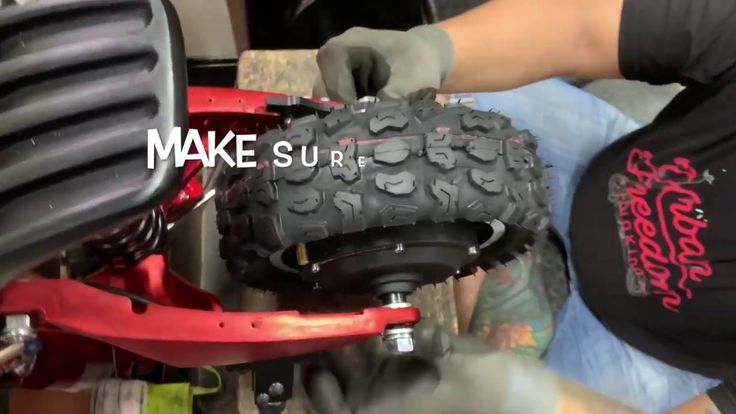 Though not easy, but some lubrication may help you in easily sliding it in.
Though not easy, but some lubrication may help you in easily sliding it in.
Therefore, add more lubricant on the top part of the rim as well as the tire.
Like we recommended pushing the tire on one side, you have to do the same here but for the upper end.
Press one end of the tire so that it goes below the edge of the rim. The chances are that, despite you putting a considerable amount of force, the tire does not make past the lip; if so, press on the bottom end.
The idea is to create a big enough wedge between the upper lip and the upper bead of the tire to accommodate a pry bar.
With the help of the inserted pry bar, stretch the tire over the rest of the rim. While prying the tire’s bead on the rim’s upper lip, press down on the tire with your hands.
This two-part process may require a reasonable amount of time, but in the time it takes you to do a complete rotation, the tire will land right in place.
To avoid scratching up your alloys, keep the pry bar pressed against the bottom portion of the wheel’s upper lip.
If done right, the tire’s beads will be covering the wheel’s lips.
If you have followed every step correctly, your tire is correctly placed and needs just to be inflated.
Remove the cap from the valve stem, and use an air compressor to fill up the now mounted tire. Remember to keep your hands, clothes, or other tiny belongings away from the tire bead.Once inflated, all items underneath cannot be removed without moving the car.
Refer to the vehicle manual or the instructions on thetire’s side to know how much the recommended tire pressure for a comfortable and safe drive is.
Here are some common mistakes people tend to make when mounting tires to rims, so you should always remember to:
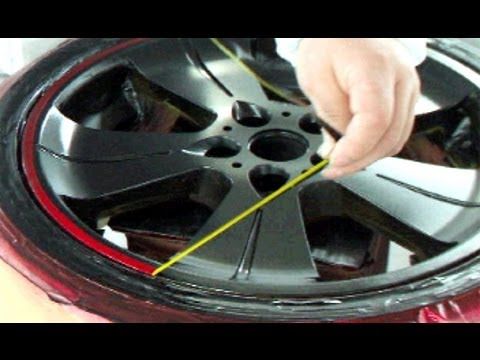
All in all, having a correctly mounted tire keeps you and your ride safe and keeps the tire inflated at all times.
That said, for best results, we strongly recommend you to get the task handled by a professional.But, if you want to DIY, follow the steps mentioned earlier to the T — won’t take you that long!
You will certainly be very worried if your car has a problem and you have to remove the tires. After fixing the problem, It's not easy to put the tire back on the rim.
There are practically countless ways to advise how to fit a tire to the rim, either by machine or by hand. This is also what makes many people interested to find out if a person who is not an auto mechanic or a professional can do this by himself at home.
So, how to put a tire back on the rim? You need to use fire to do this, which requires high safety.
The following article will guide you through the steps and important notes to handle this error effectively.
Before starting a job, especially using a lot of tools like putting a tire back on the rim, you need to prepare:
Below, we will describe the steps in the most detailed and complete way. Each step will need specific notes and manipulations. In addition, there will be notes for each stage. Check it now!
Each step will need specific notes and manipulations. In addition, there will be notes for each stage. Check it now!
This step is the first step in all your processes. What you need to do is make sure they are smooth. You need to raise your wheel part off the ground, which will make it easier for you to disassemble with the help of a lifting tool.
At the same time, you should only re-install the wheel in the vehicle when you have fixed the problems encountered. Errors that you need to improve after removing them. Make sure you've selected it all and don't have any doubts.
There are a number of causes leading to tire removal such as cracked or blown tires, punctured tires due to obstacles while moving. After the repair, you need to put the rim on the tire. Moreover, your car will be safe with a perfect wheel.
At this 2nd step, you will get a bottle of Fluid. They are often used as a support tool when you have difficulty starting the engine or cold. They will do the job perfectly under normal conditions.
They are often used as a support tool when you have difficulty starting the engine or cold. They will do the job perfectly under normal conditions.
Then, you use the spray in a circular direction around your wheel. In this next operation, carefully spray the liquid into the space between the sidewall tire and the rim. However, you should also ensure you're not taking too much of it.
The reason for adequate fluid is that too much of them can cause sidewall problems and even lead to failure, damage, and replacement.
At the same time, you should also spray on each ground in one line just below the edge. The effect of this activity is to help limit fires while you use matches/lighters and Starter Fluid.
Moreover, when using the above liquid, you need to be extremely careful when spraying on the wheels. Due to their flammability and flammability that can cause a fire, it isn't easy even to end it.
Therefore, you need to equip yourself with a fire extinguisher and the skills to manipulate them before assembling.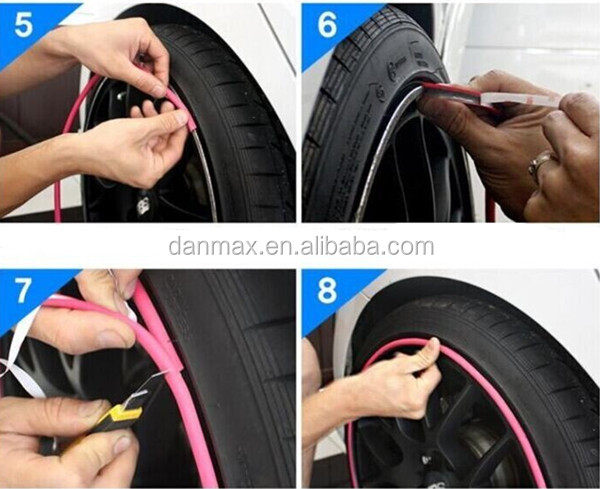
The third step in the process needs to be as soon as finishing step 2. This action will prevent the tire's granules from drying out and the solution from evaporating.
Then you start lighting it using matches, lighters, or other sources of fire. You light up the fluid associated with the components above from the ground. At the same time, it will help keep you safer in potentially explosive conditions.
But don’t worry your goal is to just light it up and then turn it off as soon as you can and that smoke is going to fill the tire, so you can do it a couple of times.
In addition, fire causes the air to expand rapidly, at the same time, the particles will move along the wheel and return to their original position.
After the tire bead is exposed to fire and when you hear the sound within 2 seconds. At this point, you need to put out the fire immediately. The faster you act, the sooner the fire is extinguished.
Moreover, the fire extinguisher at this time will also come into play.
When you hear the popping sound, it is time to end with the tire in place on the rim.
You need to use an inflator and pump outside air into your tires.
When the tire inflates, you can start or continue your journey on the vehicle that has changed the tire.
This method is standard when replacing a wheel on a rim, especially when you don't need a repair shop.
If you can't replace them yourself and are close to a store, you should take them out there. The staff will support and replace you. Then the safety will be more assured.
When taking any action, you need to be careful with what happens. The same goes for changing car tires. The effect you may experience is called Pyrolysis.
They are the decomposition process of substances by the effect of high temperature and long time. Likewise, Pyrolysis will overheat the tires, create layer pressure, and even blow the tire.
In addition, the wheel is hot due to the inflator.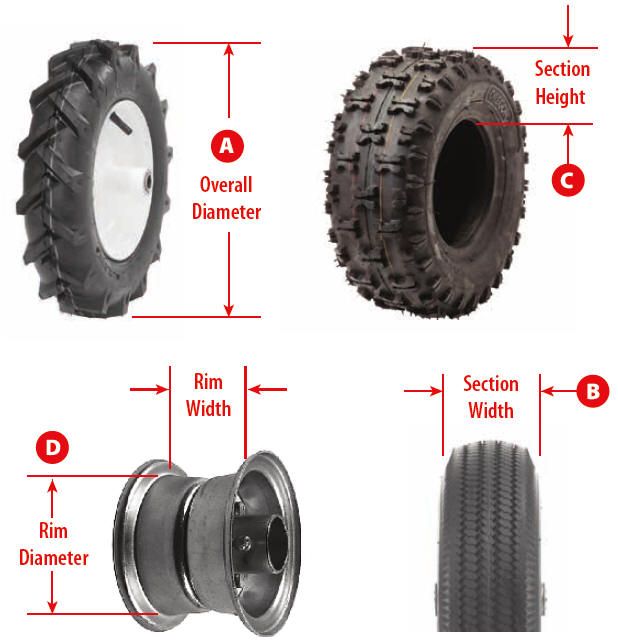 It can weld near or above the wheel and cause breakage at high temperatures.
It can weld near or above the wheel and cause breakage at high temperatures.
It is also the reason described in the above section when it is necessary to pump the fire immediately. After you hear the sound, you only have two seconds to start putting out the fire.
This chemical phenomenon will occur even when a low temperature of 183 - 185 degrees Celsius. In particular, they do not need to use oxygen to perform. They continue to develop in the tire, even after removing the source of fire and heat.
This problem is difficult to detect and occurs from some seconds to several hours later. They push the tire pressure to 7000 kPa.
With such class pressure, people around the event may suffer some problems and damage their health if standing close.
Therefore, you need to ensure safety in all steps of this process. It will be awful if someone gets hurt, even if you are not driving on the road.
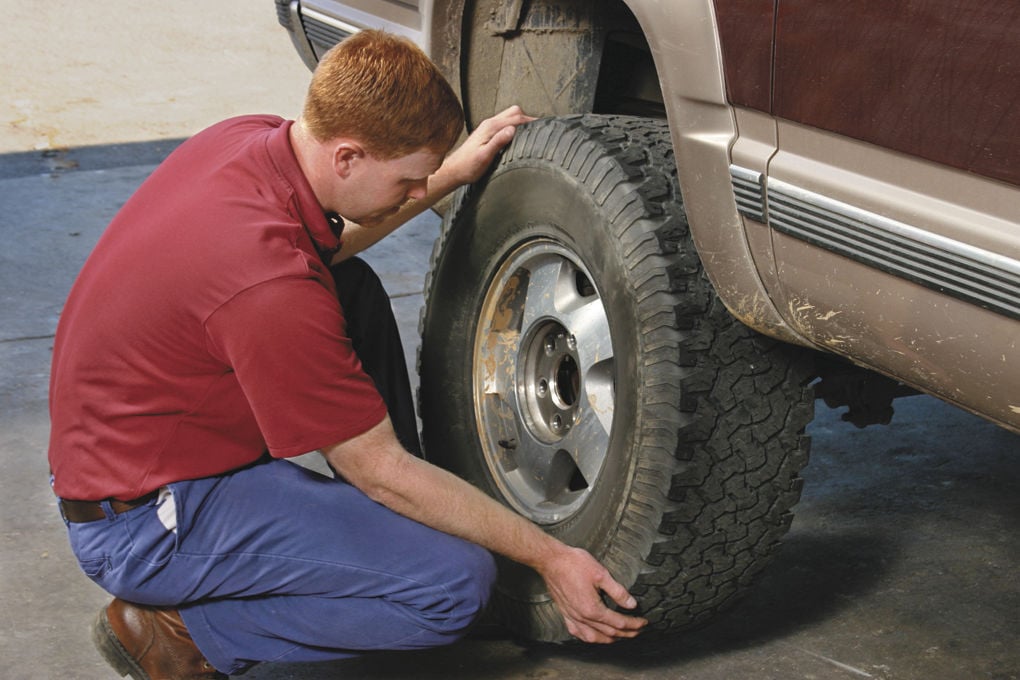 And only do it when you can't find an alternative process at all.
And only do it when you can't find an alternative process at all.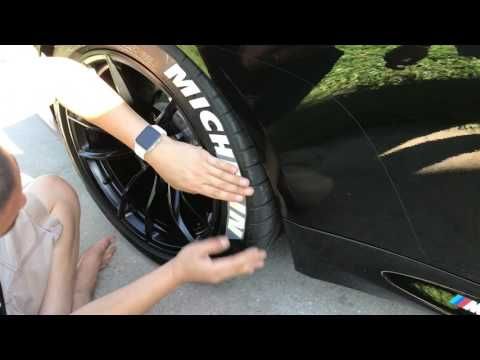 Tires, wheels, and brakes are subject to friction when moving, so care is more frequent.
Tires, wheels, and brakes are subject to friction when moving, so care is more frequent.This problem is often when your vehicle is traveling on uneven surfaces. Here are the steps for you:
All you need to do now is stay as calm as possible. Things will get better when you fix it.
Next, try to move further to a safer place like the curb while still ensuring your rims. Moving to a nearby location is ideal. However, if you can't do that, warn everyone on the road, so they know and avoid it.
Once more stable, you need to remove the tire and place it on the ground. At the same time, flatten the tire and tighten it with the ratchet belt.
As described above, you will inflate the tire until you hear a sound and make sure the tire is in place.
Always carry tools in the car to make sure you can adapt and handle the best if you encounter this situation.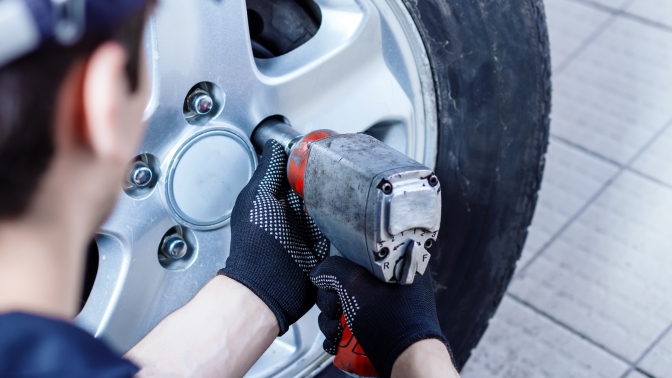
You can see more instructions here: Video created by Garage Boys
Thus, the article has provided the steps in putting a tire back on the rim. Hopefully, you can do this activity yourself.
Please note that using fire is convenient and easy but also extremely dangerous. You must ensure your safety.
Car repair shops can also help you do this assembly very well for a small cost.
Many cyclists are used to the telltale hissing sound coming from tires. At any moment, your high-tech mountain bike can be put out of action by a simple thorn or a small piece of pebble.
Since the advent of pneumatic tires, this problem has haunted cyclists, tiring with the frequency of punctures and the amount of work needed to fix them. And only recently, bicycle tire and rim manufacturers have decided to create a universal tubeless system (UST).
This system is a sealed rim in which the holes for the spokes and the nipple are completely airtight. Also, the non-porous rim sidewalls have improved grip on tire walls that are thicker than conventional tires. During tire inflation, the air presses the tire bead (lower edge of the sidewall) into the corresponding groove in the rim flange, thereby sealing the contact between the tire and the rim.
Also, the non-porous rim sidewalls have improved grip on tire walls that are thicker than conventional tires. During tire inflation, the air presses the tire bead (lower edge of the sidewall) into the corresponding groove in the rim flange, thereby sealing the contact between the tire and the rim.
Theoretically, the advantages of a tubeless tire include low weight (due to the lack of a tube, although tubeless tires are heavier than conventional tires), less pressure (providing better grip) and the absence of pinch punctures (also known as "snake bites"). If you add some sealant to the system, then penetrating punctures will also be a thing of the past.
But what about a cyclist with conventional rims without sealing? Just buy a conversion kit, tubeless or Tubeless Ready tires and he can send his bike tubes to the dustbin of history.
Of course, you can only add sealant to a conventional chamber. In this case, you won't gain any weight or grip advantage, just add a little weight to the wheels, but it will help you avoid punctures and not spend money on new tubeless tires and a tubeless conversion kit.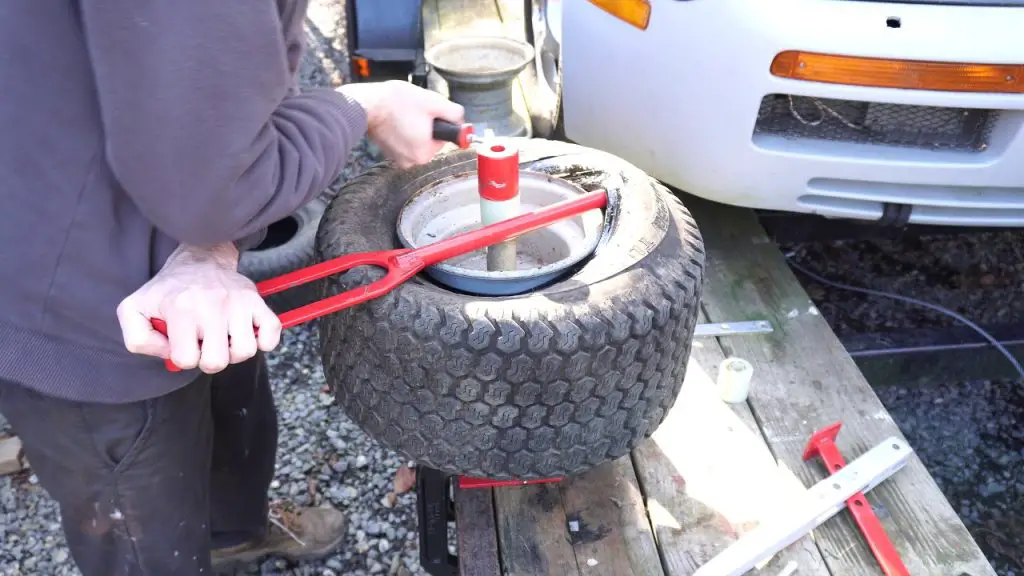 Read our guide to using Gremetic in chambers.
Read our guide to using Gremetic in chambers.
Remove the wheels, tires and tubes from the bike. If the wheels are old, greasy and dirty, clean them with hot soapy water or alcohol. The rubber tape will need to be taped to the spoke bed of the rim, so the rim needs to be clean and free of dirt so that the tape is snug against it.
Take the rim tape and unfold it so that the nipple is on the inside of the tape. Run your fingers around its circumference and check it for cuts, nicks, bulges, and proper molding that could cause air to leak. Even if the tire drops a few psi in a day, it can be very annoying.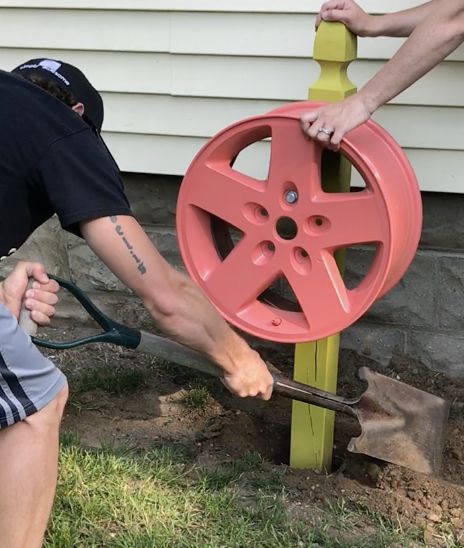
Position the part of the rim tape with the nipple in the spoke bed, gently push the end of the nipple through the hole provided for it and pull it out the other side. The piece of tape near the nipple is slightly thicker and therefore difficult to install correctly, but it is important to install it correctly now so that you do not have to look for the source of leaks later.
Next, you need to install the remaining section of the rim tape in the spoke bed. This is easier said than done as the tape is tight against the rim. The easiest way to install it is with a screwdriver with a long thin handle. Position the screwdriver perpendicular to the rim between the rim and the rim tape. Slowly moving the screwdriver around the circumference of the rim, set the rubber band evenly in the spoke bed.
First of all, make sure you have a working nipple that does not let air through. Most nipples have a special threaded lock washer that screws onto the nipple body. The nipple usually comes with a rubber o-ring that needs to be installed between the lock washer and the rim. By flattening the O-ring, you will create an additional seal on the outside of the hole.
Most nipples have a special threaded lock washer that screws onto the nipple body. The nipple usually comes with a rubber o-ring that needs to be installed between the lock washer and the rim. By flattening the O-ring, you will create an additional seal on the outside of the hole.
Now that the rubber rim is in place and lying in the center of the rim, you need to check the uniformity of its tension throughout the entire length of the rim. Air can leak between the rim and the rim tape if there are loose or tight areas on the tape. Again go around the rim with a screwdriver and equalize the tension of the tape. This will take a few minutes.
Tires from different manufacturers or even different models from the same manufacturer differ in installation complexity, quality and other characteristics. If the tires were not installed on the wheel, then first install them as usual with tubes, inflate to the maximum recommended pressure and leave them overnight. After that, they will be much easier to install and pump.
After that, they will be much easier to install and pump.
Place the wheel on your feet so that the nipple is at the highest point of the wheel (at 12 o'clock). First, place the tire beads near the nipple, then walk with both hands around the circumference of the tire (in different directions), loosening the bead over the rim wall along the way. Once you get to the very bottom of the wheel, leave an 8-inch section.
Some sealants can be applied without removing the nipple core, the spring-loaded piece that screws into the nipple body and allows air to enter the tire without escaping, but most cannot. Sludge Sealant can be injected without removing the core of the nipple. Removable core nipples are included in many conversion kits, but not all. The core must be unscrewed and removed. Be careful not to lose it as it can easily roll over furniture on the floor. If you have a nipple without a core to be removed, then immediately go to step 12.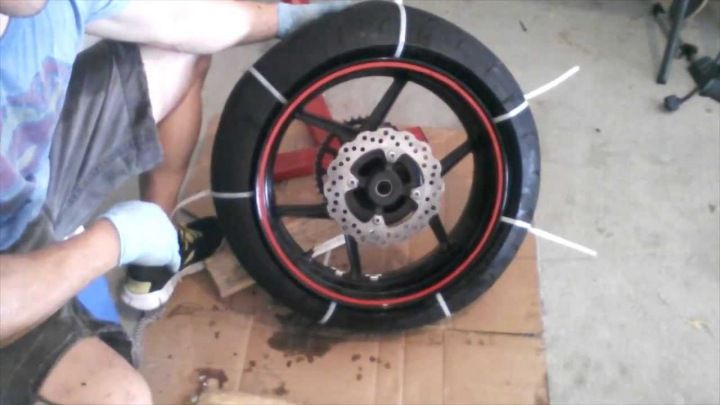
Now that you have completely seated the tire on the rim and removed the core of the nipple, you can inject the required amount of sealant into the tire using the narrow line nozzle. Shake the sealant bottle well before doing this.
After the sealant has been poured through the nipple, screw the nipple core back on. Before screwing in the core, it is recommended to lubricate its threads with petroleum jelly, which will reduce the likelihood of jamming of the core or difficulty in turning it.
If you don't want to or can't apply sealant through the nipple, leave a small section of the tire bead exposed on the rim and pour sealant through it. Use a bottle with a nozzle to infuse the sealant, as a natural rubber tire is difficult to keep its shape. Suspend the wheel carefully so as not to spill the sealant from the tire.

To install the last section of the tire, carefully rotate the wheel so that the uninstalled section is on top. Now you can let the sealant spread all over the tire. Do not worry if a little sealant still leaks.
Start inflating the tires with the car pump until the tire beads press against the rim. When the pressure is too high (about 60 - 80 psi for UST tires and Tubeless Ready tires), the tire beads should click into place with a characteristic "clicking" sound. Be careful when handling this high pressure. Your tires are now tubeless.
Air can escape between the rim and tire. Raise the wheel, take it by the tire like you are holding a tray. Shake the wheel well so that the sealant spreads throughout the tire, reacts with the air and creates a thick sealing layer. Even if you skip this step, over time, the sealant will still spread on its own. Leave the wheel for 15 minutes, then repeat this step again. Air leakage should stop.
Air leakage should stop.
Hold the wheel up to your ears and listen carefully for air leaks. If a leak is found, then it is most likely a microscopic hole. Repeat step 15 and/or add more sealant.
The carcass of the UST tire is impregnated with special rubber to retain air. Tubeless Ready tires have thinner walls, which means they are lighter and less airtight.) They have a dockable bead needed to install them as tubeless. At the same time, Tubeless Ready tires can only be used as tubeless tires in conjunction with liquid sealant, but we still recommend buying UST tires. Theoretically, with the help of sealant, you can use both tubeless and conventional tires, but they can only be installed correctly by trial and error.
 Now the air enters the tire much faster, providing the pressure required to seat the tire. Once the tire is in place, disconnect the pump and reinstall the nipple core. Inflate the tire to the recommended pressure.
Now the air enters the tire much faster, providing the pressure required to seat the tire. Once the tire is in place, disconnect the pump and reinstall the nipple core. Inflate the tire to the recommended pressure. TIRE SIDEWALL MARKING
Indicates the type of rim the tire is compatible with. Unless otherwise noted, should be used on rims with hooks.
Nominal profile width and suitable wheel diameter in millimeters according to ETRTO.
Country of manufacture.
Minimum and maximum pressure in bar and psi. inch.
Specifies the direction in which the tread pattern should be directed when the wheel is rotated forward.
Indicates that the tire should be installed with an inner tube only and not tubeless or otherwise.
TIRE TYPES
TUBE TYPE: A tire for use with an inner tube only.
TUBELESS: A tire for use on tubeless rims only, which can be fitted without an inner tube. Can be used with internal chamber.
TUBELESS READY: A special type of tubeless tire that requires a sealant inside to maintain pressure. Can be used with internal chamber.
TUBULAR: A fully enclosed, stitched or vulcanised, tire construction (tube) that requires a special tubular rim and is glued to it when mounted.
TIRE INFLATION RECOMMENDATIONS
Never exceed the recommended tire pressure.
Proper pressure affects the load, speed and handling of a bike and is vital to performance and safety performance such as braking, maximum traction and tire life.
Inflate tires "cold", that is, not warmed up on the road.
Do not exceed the maximum pressure indicated on the tire sidewall.
Insufficient tire pressure causes excessive creasing and rapid wear.
Excessive pressure causes discomfort when driving and reduces the contact area of the tire with the road surface, which impairs handling and traction.
Before every ride, it is essential to check and maintain the correct tire pressure (while the tires are “cold”), especially on tubeless systems, which are more prone to sudden pressure loss.
WARNING: Driving with tires with incorrect air pressure is dangerous! This can lead to an accident, accident, serious injury or even death.
TIRE CHECK
The condition of the tires and the air pressure in them should be checked before each trip, and also, and even more carefully, after hitting any object on the road. If the tread is worn and the body material (cord) becomes visible, bulges, cracks, cuts, holes, uneven wear appear on the tire, or the tire shows signs of any other damage, it is recommended to replace it immediately.
If the tread is worn and the body material (cord) becomes visible, bulges, cracks, cuts, holes, uneven wear appear on the tire, or the tire shows signs of any other damage, it is recommended to replace it immediately.
Over time, the condition of the tire will in any case deteriorate under the influence of external forces, such as contact with the road, punctures, improper repairs, mounting-dismantling, inflation-deflation, heating-cooling, excessive exposure to ozone, improper storage conditions, etc., etc. . To reduce the impact, tire manufacturers add anti-ozonants and antioxidants to their products.
Since it is not possible to accurately predict what external forces a tire will be subjected to, there are no scientifically based limits on the life that a tire can be given. It is recommended that the condition of the tires (as well as tubes and rim tapes) be checked regularly by a bicycle specialist who can assess their suitability for further use.
As for tubeless systems with liquid sealant inside, it is necessary to check the condition of the sealant itself and change it regularly in accordance with the instructions.
To avoid cosmetic damage, use low-pressure tap water to clean and wash the tire sidewalls. Never use cleaners to improve the appearance of the sidewall, otherwise you will remove antioxidants, which can degrade the quality of the rubber and lead to cracking of the sidewalls. Using hydraulic sprayers with high water pressure can also cause damage to the sidewall.
Avoid excessive mechanical stress on tires and tubes (for example, do not brake by blocking the wheel, do not run into sharp objects, do not drive with insufficient or excessive tire pressure, etc.).
If your bike has rim brakes, the rim is subject to constant wear and tear, which over time can lead to tube failure and puncture. In any case, if you have any doubts about the condition of the tires, consult a bicycle specialist.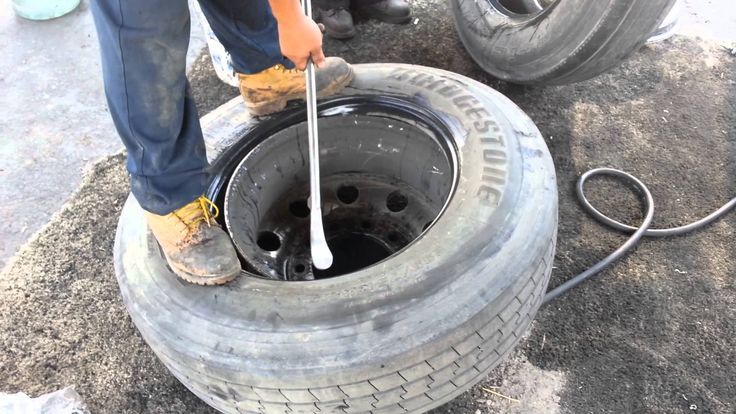
High tire pressure can damage the rim, so check the maximum pressure allowed for the specific rim before installing the tire (check with the wheel dealer or rim manufacturer for information on whether the rim can withstand tire pressure).
CHANGING TIRES
PREPARATION
1. Before installing or removing a wheel, read the bike manufacturer's instructions and make sure you know how to handle the wheel mounting mechanism.
2. Verify that the rim, tire, and tube are compatible with each other by checking the instructions for each component manufacturer. A mismatch between tire and rim can cause the tire bead to come off the rim or damage to the inner tube, resulting in a rapid loss of air pressure. If you're unsure, be sure to check with a bike specialist.
3. Make sure that the mounting area of the tire is clean and that foreign objects do not get into the tire, as they can damage the tube, rim tape, the tire itself, or contaminate the sealant (in the case of a tubeless tire).
4. Make sure the rim is in good condition. If it is damaged, then it must be replaced.
5. Check the condition of the rim tape, if used. If it is damaged or does not completely cover the spoke holes in the rim, it must be replaced. Poor quality rim tape is very often the cause of a sudden loss of air pressure.
6. Check the maximum allowable pressure for the given rim type. It must be equal to or higher than the tire. Tires that allow a pressure reduction equal to or greater than 3 bar (43 psi) must be mounted on lug rims.
7. A tire capable of inflating more than 5 bar (73 psi) must be mounted on a lug rim. Hooked rims are marked with a "C" in the size label. If you have any questions, please contact a bicycle specialist.
8. In the case of installing a tire with a tube, talc helps to properly place it in the tire. For latex cameras, its use is mandatory, but it is also recommended for butyl cameras. It is also recommended to install a new inner tube each time a new tire is fitted or after a puncture.
It is also recommended to install a new inner tube each time a new tire is fitted or after a puncture.
9. When installing a tubeless tire, always check the condition of the valve (nipple) and replace it if it looks damaged or if air pressure is lost.
10. When installing a Tubeless Ready tire, always check the sealant and change it if it is dry. Also read the sealant manufacturer's instructions carefully to make sure it's right for your tire.
TIRE REMOVAL PROCEDURE
1. Unscrew the valve cap (nipple) and locknut, completely deflate the tire.
2. Peel off one side of the tire all around from the edge of the rim by applying pressure starting from the area opposite the valve. Tubeless tires may require more effort for this.
3. Position the tire pryer next to the valve and carefully insert it between the tire and rim, being careful not to pinch the inner tube (if any). Then, using a lever, lift the sidewall of the tire off the rim. To make the job easier, always make sure that the other bead is in the rim bed.
To make the job easier, always make sure that the other bead is in the rim bed.
4. While holding the first rig in this position, insert the second rig about 10 cm from the first and repeat the above operation. Then run the pliers around the circumference of the tire to completely separate one bead from the rim.
5. Remove the inner tube, if present, or liquid sealant, if present and still liquid, and then remove the second tire bead from the rim with your hands.
TIRE INSTALLATION PROCEDURE
1. If installing a tubeless tyre, make sure the rim is sealed, tubeless tyre-compatible, or tubeless-compatible. If the rim is tubeless compatible, you will also need a tubeless rim tape that will completely cover the spoke holes. It is possible to lubricate the entire circumference of the rim with a special tubeless lubricant (do not use oil or grease) - this will facilitate the installation procedure and the correct positioning of the tire on the rim.
2. Insert the first bead of the tire into the rim, observing the direction of rotation of the tire indicated on its sidewall, starting opposite the valve.
3. If installing a tire with a tube, slightly inflate the tube, but only so that it becomes rounded, and gently insert into the tire, starting at the valve and completely carefully placing it in the rim.
4. Starting on the side opposite the valve, press the other bead of the tire into the rim and push it around the rim in both directions until it fits properly in the rim. For tubeless installations, add the recommended amount of sealant before inserting the last bead piece. If the tire bead becomes difficult to push into the rim, or the last part of the bead does not snap into place, make sure that the bead around the entire circumference of the rim is in place. If necessary, squeeze the sidewalls of the tire into the rim with your hands.
5. If fitted with a tube, make sure it is not pinched between the tire and the rim or valve, and then secure the valve to the rim with a locknut.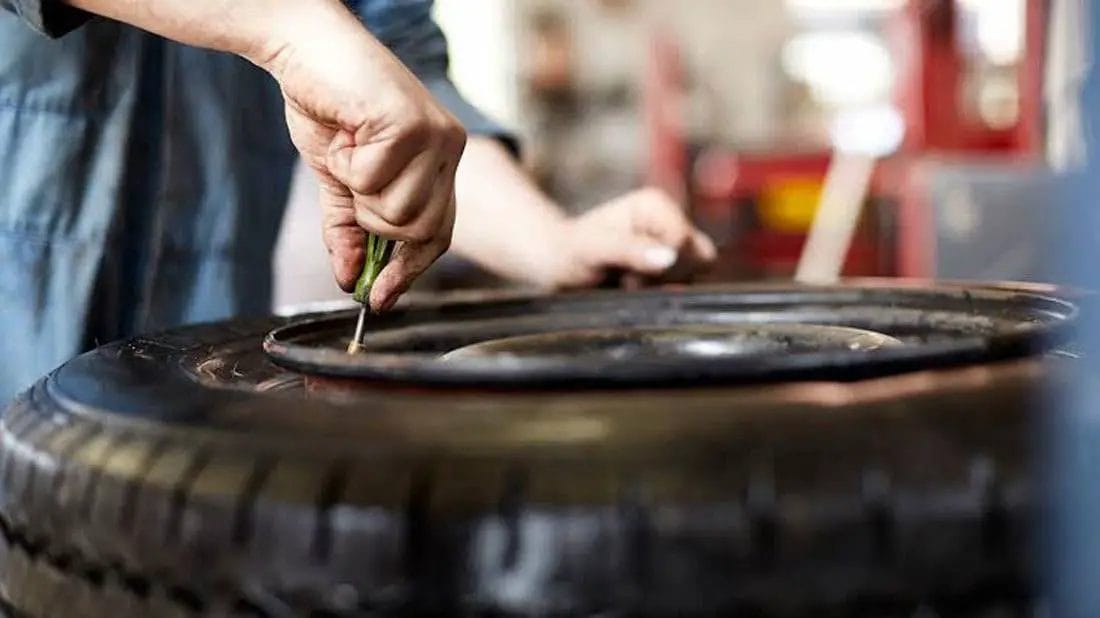
6. Inflate the tire to the maximum allowable pressure using a pressure gauge pump so that the beads are properly seated on the rim. Tubeless tires click into place with a characteristic popping sound. Rotate the wheel by hand at low speed and at an angle to check that the beads are correctly positioned and also that the liquid sealant is spread inside (if the installation is tubeless).
7. The tire is properly seated when the thin line above the side of the rim is equidistant from the edge of the rim all around. Then reduce the pressure to your preferred pressure (within the markings on the sidewall of the tire) and close the valve. Do not exceed the manufacturer's maximum pressure for tire, rim and rim tape.
8. When inflating a tubeless tire for the first time, a strong jet of air is required, so you may need a compressor.
9. Before each ride, check the air pressure, tire bead fit, wheel-to-hub attachment, and brake pads (disc or rim).
10. Before using newly installed tires, be sure to first brake test and do a few test maneuvers.
USING TIRES ON FULLY SEALED CARBON AND ALUMINUM CLINCHER RIM WITHOUT RIM TAPE
Fully sealed carbon and aluminum rims, such as tubeless rims, usually don't have spoke holes in the rim, so manufacturers don't mandate the use of rim tape.
However, keep in mind that in the case of bikes equipped with rim brakes, the heat generated during braking directly enters the tire system, significantly increasing the thermal load on all components, such as the tire, the inner tube (if any) and the rim itself. In the event of prolonged braking, riding without a rim tape can cause the tires to deflate quickly, with the risk of losing control of the bike.
This becomes even more relevant in the case of latex and lightweight tubes, as well as tubeless installations. In order to minimize the chance of failure due to overheating, it is recommended to use rim tape for any installation, and to avoid continuous, prolonged braking when descending a mountain, if possible.
USING CLINCHER TIRES WITH CARBON RIM
Carbon rims sometimes pose a risk of tire edge damage due to the sharp edges of the rim. Therefore, before mounting the tire, it is recommended to make sure that there are no sharp edges on the rim hooks. To verify this, carefully run your finger along both edges of the rim - there should be no nicks, sharp protrusions or excessive bumps on it. If there are, then the rim needs to be replaced.
If in doubt, please consult a bicycle specialist.
TIRE STORAGE
Tires should be stored in a cool, dry place at 10°C - 21°C, avoiding contact with heaters.
Storage temperatures that are too low are not harmful in and of themselves, but can cause tire stiffness. In this case, before unfolding the folded tire and mounting, it is necessary to keep it for several hours at a temperature of about 16°C.